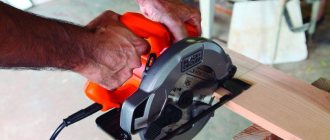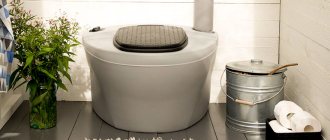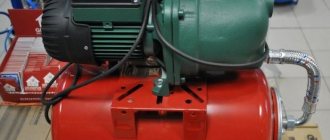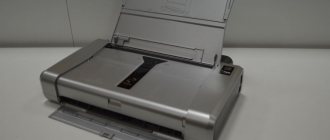Inverter-type welding machines appeared relatively recently and led to a real revolution in the production of electric welding equipment. The very definition of “inverter” in relation to a welding machine is erroneous. It would be correct to say: a welding machine with an inverter power supply.
inverter type welding machines
What is the advantage of using such a block?
1.The most important thing is to reduce power consumption and increase efficiency. Due to the reduction in current consumption, the load on the network and wiring in the house is reduced.
2. Significant reduction in weight (some models weigh only 2.5 kg).
3.Welding current control. The high-frequency generator control unit used in the inverter allows you to control the entire welding process and creates additional capabilities and functions, such as “hot start”, “anti-stick electrode”, etc.
4.Safety. Automatic shutdown in case of insulation failure.
Along with the advantages of inverters, there are also a number of disadvantages:
- The cost of both the device itself and its repair.
2. Due to the use of semiconductor parts, operation is limited at low (below -15 degrees) temperatures, high humidity and dust.
Although there are exceptions to the rules, for example, the “Chinese” AOTAI ARC 200 (click to go to the device description, information is at the end of the article) and the domestic Torus. The latter, according to the manufacturers, can operate at temperatures as low as -50 degrees!
3. Dependence on voltage fluctuations in the network, which should be distinguished from low voltage. Inverters have learned to cope with the latter. Most devices operate at 220V (-15% +15%) - this is approximately from 190V to 250V. But there are inverter devices that operate at low voltages. For example, the “German” EWM PICO162 (according to the passport data) operates at 220V (-40% +15%) – from 140V to 250V. The price for it, like for any European equipment, is very high, but the network and budget options, for example, Resanta PN series (read a detailed review of Resanta sai 160 PN)
EWM PICO162
All the disadvantages are completely offset by the advantages and inverters are becoming more and more popular.
Welding inverter: what is it?
A welding inverter is a modern welding machine designed for manual arc welding with coated electrodes. It differs from a classic transformer or rectifier in its compact dimensions, greater functionality and variety of models available for sale.
There are also welding inverters for welding in a protective or inert/active gas environment, but they are usually called semi-automatic.
The basis of any welding inverter is a block of electrical microcircuits with transistors. Thanks to this feature, it was possible to significantly reduce the size and weight of welding machines, as well as add new functions that were previously unavailable to welders. Most often, inverters are equipped with “arc force”, “hot start” or “anti-stick” functions. They stabilize the arc, simplify its ignition and prevent the end of the electrode from sticking to the metal. But these are the problems that beginners most often encounter.
The main advantages of the inverter are compactness, low cost, large selection and additional functionality. Manufacturers offer dozens of inverter models at prices ranging from $50 to infinity. There are also very cheap devices on sale from little-known brands, but we do not recommend considering them for purchase.
Inverters are the most popular type of welding equipment. They make up up to 70% of the entire assortment in any welding shop. It is not easy for novice welders to navigate such a variety and choose the optimal model, so they often rely only on the cost of the device. But this is the wrong approach. Next, we will talk about the main types (or classes) of welding inverters so that you understand their approximate cost, characteristics and capabilities. This will make it easier for you to sort through the large assortment.
Links
Electric arc Manual arc · Gas shielded arc
Automatic
submerged arcPressure welding Kuznechnaya · Ultrasonic
·
Friction
·
Gas press
·
Cold
·
Explosion
·
Magnetic pulse
·
Diffusioncontact welding Spot · Embossed
·
Suture
·
Butt
·
ReflowOther types of welding Gas · Electroslag
·
Thermite
·
Plasma
·
Electron beam
·
Laser
·
X-rayEquipment and equipment Welding electrode · Welder suit
·
Welding transformer
·
Welding unit
· Welding inverterOccupational diseases Electroophthalmia · Manganese poisoning
Professional organizations Electric Welding Institute named after. E. O. Paton · Department of Welding, Moscow State Technical University named after N. E. Bauman
·
American Welding Society
Varieties
To choose the right inverter for welding work, you need to clearly understand what exactly you are going to weld and under what conditions. After all, an inverter welding machine can be household, semi-professional, professional and industrial. Their characteristics differ significantly, and one device may simply not be suitable for certain jobs due to lack of power.
Household inverters
Let's start with household-grade devices. The most budget and compact models are sold at prices starting from $50, if the manufacturer is well-known and provides a guarantee for its equipment. Such devices are good for those who are short on money, but really want to learn how to weld. They are low-power and the maximum current usually does not exceed 200 Amperes.
If you still need a more productive inverter for household tasks, then it is better to take a closer look at models costing $100 and above. The optimal current strength for a household inverter is 250 Amperes (on the packaging and in the description it is often indicated as 250A). Also, household inverters are often equipped with additional functionality that simplifies and speeds up welding. And in addition to the device, the kit often includes not only welding cables, but also a protective mask, a belt and a brush.
Insufficient cross-section of extension cords
When welding at a considerable distance from the power outlet, it is impossible to do without the use of extension cords. Increasing the length of the power cable and choosing the wrong cross-section leads to a drop in power and a decrease in the voltage on the extension cord. The longer you use the carrier, the thicker the cable cores should be.
In order for the inverter to operate stable, it is necessary that the cross-section of the power cable and extension cord up to 10 m be the same. If the carrying distance is longer than 10 m, the cable cross-section must be increased compared to the inverter power cable. There are a large number of sites on the World Wide Web that offer free calculators for calculating cable cross-section by length and load. Under no circumstances should you install cables with a cross-section of 0.75 mm2, or use carriers wound in bobbins. All this can cause equipment failure. In general, when connecting the inverter to an electrical outlet, you need to make sure that the power of the power source is sufficient for stable operation of the welding inverter, and the cross-section of the power wires and carriers corresponds to the load; only in this case will the welder have a long and happy life.
Read the article from an experienced welder “How to choose the length and cross-section of the welding cable”
Application
All beginners liked welding equipment of this inverter type because of its ease of use. To start using the inverter, just plug it into a power outlet, set the welding mode and you can start. There is no need to connect additional components such as a gas cylinder or burner. To form a seam you will need electrodes and your skills. All adjustments are intuitive, they are also labeled, and some functions have a light indicator. Advanced inverter models have a digital display, which is even more convenient to work with.
In this article we described in detail how to use a welding inverter. Everything is described: from the first switching on of the device to the end of the work. There we also described the most common breakdowns that beginners encounter and suggested solutions.
BLUE WELD
One of the largest European companies producing inverters, Blue Weld, was founded in 1963 and has representative offices in 120 countries. The company has been selling its products in Russia since 2002.
Inverters produced by the company are divided into three categories:
- for argon arc welding, Prestige series (220 V) and Best series (380 V);
- for manual arc welding, Active series (220 V) and Best series (380 V);
- welding autonomous power stations Moto Weld.
A popular inverter model from Blue Weld is the Prestige 171/S. Operates from a mains voltage of 220 V, welding current 5–150 A, duty cycle 60%, electrode diameter 1.6–4.0 mm. Dimensions 300x130x230, weight 3.6 kg. The inverter has the functions of electrode anti-stick and arc force regulation. The package includes a case, a welder's shield, an electrode holder, a ground cable and a brush for removing slag. Price: 15,390 rubles.
Features of storage and maintenance
To understand how to properly store and maintain a DC welding inverter, you need to know what it is constructed of. We have already said above that the basis of all modern inverters is compact, high-performance transistors such as IGBT or MOSFET. It was thanks to them that we were able to significantly reduce the dimensions of the welding machine and add more functionality. Also at the heart of the inverter there are many microcircuits and a cooling system.
The technical equipment of the inverter is much superior to that of a classic transformer. This means that with great functionality you will have to put up with the peculiarities of storage, maintenance and operation of such a device.
Most often, breakdowns occur due to dust settling on the inverter components. Dust and dirt enter the housing through the ventilation holes. Add to this high humidity and the device will definitely not last long.
Repairing an inverter is never easy. Here you won’t be able to quickly fix everything with your own hands, as is the case with a transformer. You will have to take the device to a service center. And this is not cheap due to the high cost of parts.
What can you do to avoid all this? Properly store the device and maintain it on time.
Storage
If you use your inverter frequently and don't want to bother with storing it, then simply put it in the cardboard box it came in. Store the box itself in a dry, warm room. Do not leave the inverter in the open air; wipe off dirt, dust and moisture from the surface of the housing.
If you rarely use the device, then wrap the inverter in plastic wrap, make holes in it and place the device in the box. Do not leave the inverter in the country house or in an unheated garage. If you have the opportunity, take the device into your apartment and store it in a closet.
Service
Now about the service. Of course, it is best to carry it out at a service center. If you have a device from a well-known manufacturer and you live in a large city, then find an official service center and return the device for maintenance for a small fee. A specialist will not only check the performance of your inverter, but will also carry out professional cleaning with compressed air. Including from the inside.
If you do not have the opportunity to take the device to a service center, then you can perform the service yourself. Clean the device regularly with a cloth and check the reliability of all connectors. If there is a need to tighten something, tighten it. Pay attention to the speed of work and the smoothness of adjustments.
No. 10. Open circuit voltage
When the inverter is turned on, but does not yet produce an electric arc, it operates at idle, the voltage is from 40 to 90 V. Idling is necessary to ensure ease of ignition and contact between live parts. The higher the indicator, the better the contact and easier ignition. On the other hand, high open circuit voltage leads to increased electricity consumption. From all this it follows that it is better for novice welders to take devices with an open circuit voltage of up to 70-90 V: this will simplify the work and help hold the arc. For experienced specialists, devices with an open circuit voltage of 40-60 W are more suitable, since there are no longer problems with proper ignition and loss of arc, and there is a desire to save electricity.
How does the device work?
Welding transformers are already fading into the background. With the advent of inverters, welding metal structures has become much easier. Their design is simple and lightweight. The equipment itself can be easily placed in a small bag or car for transportation, for example, to the country. At the same time, learning the welding process using an inverter is much easier than using a transformer. This device does not require such effort and special training.
Before starting work, it is recommended to understand the basic principles of operation of this equipment. The operating principle consists of several stages of converting electric current using an inverter type. The basic process is as follows:
- Electrical alternating current from the main network is converted into direct current while passing through the spiral, which allows the arc to be stabilized.
- Direct current is again converted to alternating current. At the same time, its frequency increases several times.
- After this, the voltage level of the electric current is reduced to the most optimal value. As a result, it is possible to achieve the maximum current value.
- After this, the voltage level in the network is rectified.
This principle of operation allows the conversion units to be significantly smaller than those of transformers, which is convenient for a novice welder. Due to this design, the dimensions of all equipment are quite small, which makes it easy to buy such a device for a summer residence and use it at home.
In order to start welding work, it is necessary to connect the electrode holder to the electrode, and the ground clamp to the structure to be welded. Then touch the electrode to the part, which will lead to an electrical short circuit and the formation of an arc for welding. When the electrode melts, the coating on its surface burns and protects the weld pool from oxygen. This discharge will generate enough heat to melt any metals, and the thickness will depend on the strength of the welding current.
The electrode must be held at a distance of several millimeters from the surface to be treated. As a result of high temperatures, the welded part and the rod begin to melt at the point where the electric arc passes and are combined into a monolithic structure. The joint can be easily identified by the weld seam, from which the slag will need to be removed after work. If you want to get an aesthetically beautiful part, the seam itself should be processed with a grinder.
If you follow all the rules of welding, the weld should not differ significantly from the original structure of the metal. In some cases, it is possible to achieve a more effective result. Let's consider which welding machine is better to choose. To do this, it is recommended to study the pros and cons of the device.











